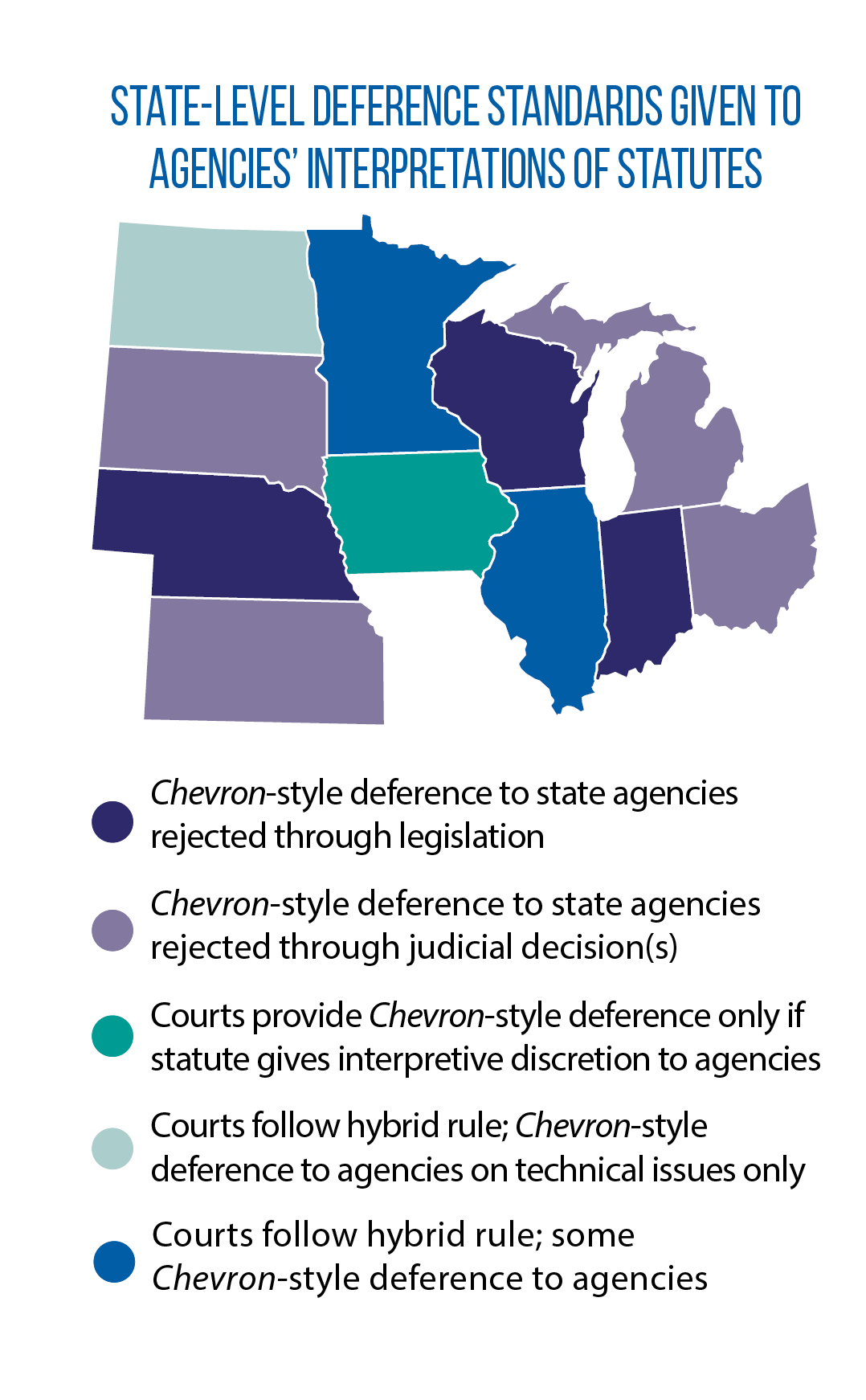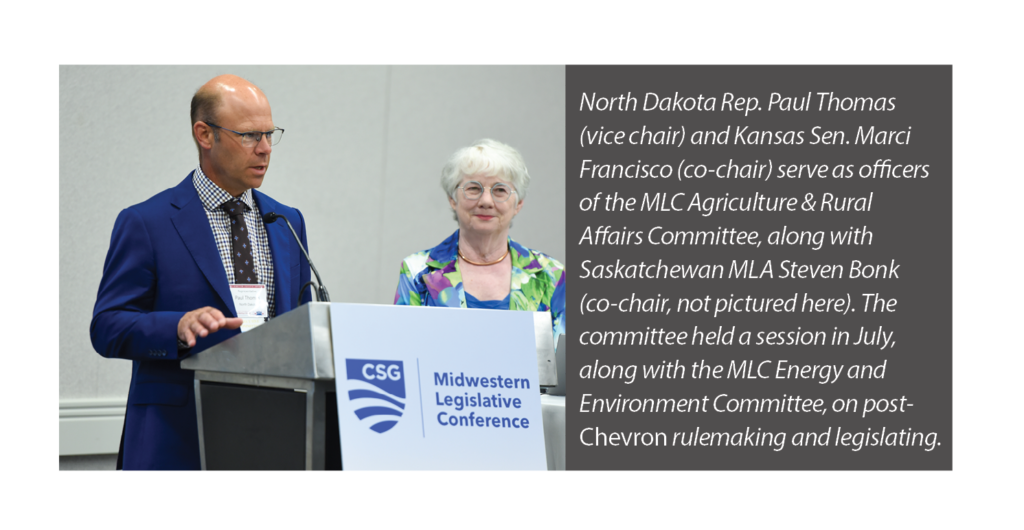A peek at the post-Chevron world: Legislators explore implications of court ruling, recent state actions
In late June, the 40-year-old Chevron doctrine came to an end.
Its demise is the result of two U.S. Supreme Court decisions, referred to collectively as Loper Bright, that mark the start of a new judicial era on federal rulemaking and the deference — or now, the lack of it — given to federal agencies to interpret laws passed by the U.S. Congress.
As lawmakers learned only a few weeks after the landmark ruling, this kind of shift already has been occurring in some states.
A four-person panel of experts led a discussion at the Midwestern Legislative Conference Annual Meeting about the ramifications and uncertainty likely ahead for legislatures, agencies and courts post-Chevron, at the state and federal levels. The session was co-hosted by the MLC Agriculture & Rural Affairs and Energy & Environment committees.
Chevron to Loper Bright
The Chevron doctrine originates from a 1984 U.S Supreme Court decision: Chevron U.S.A. v. Natural Resources Defense Council. According to the doctrine, in the absence of a clear directive given to a federal agency, courts should defer to an agency’s reasonable interpretation of the laws that it was congressionally charged to administer.
Over the 40 years of Chevron, federal lawmakers relied upon the rule “tens of thousands of times,” explained David Doniger, a senior strategist with the Natural Resources Defense Council.
Whether it’s Congress or a state legislature, he added, legislative branches are unlikely to have “the bandwidth, the expertise or the foresight to make the decisions at the granular level.”
Instead, they have deferred technical lawmaking and gap-filling to executive branch agencies, which can best adjust to the modern-day complexities of governance in a timely way.
But under Loper Bright, deference to these agencies is replaced with a “judges, judge” rationale,” Marquette University Law School professor Kali Murray said.
She explained the position of those who support the new approach this way: “When a particular term is ambiguous, our constitutional framework demands that a judicial actor resolve this conflict.”
Federal agencies, such as the Environmental Protection Agency, “saw the handwriting on the wall and stopped relying on Chevron some years ago,” Doniger told MLC attendees.
He said rather than explaining that “a law has several permissible readings … [n]ow the EPA says, ‘This is the best reading of a statute, and [then] explains why that’s true.’ “
According to Rusty Rumley, a senior attorney at the National Agricultural Law Center, Loper Bright won’t slow down the amount of or pace at which regulations are passed; it will change the process and how cases move through the courts.
The panelists disagreed on the merits of upending Chevron. However, there was agreement that, under Loper Bright, Congress will need to write more specific bills with precise language and instruction for agencies. Rumley cautioned that such details will be necessary, but may also hamstring the agencies or have unintended consequences.
New era in states as well
Mathura Sridharan, Ohio’s deputy attorney general and director of the Ohio Tenth Amendment Center, told attendees that by overturning Chevron, the U.S. Supreme Court appropriately returned rulemaking and authority back to an elected legislative body (Congress).
That same rationale also led the Ohio Supreme Court to reject state-level, Chevron-style deference in a 2022 decision.
In 2018, Chevron-style deference ended in Wisconsin as the result of a state Supreme Court decision and subsequently passed state legislation.
Six years later, Murray said, “we have not had really clear guidance on how to look backward to change the justification” of how agencies were interpreting laws under Wisconsin’s old legal framework.
Similar uncertainty now exists at the federal level: What happens to the regulations and enabling statutes that were passed in the 40 years between Chevron and Loper Bright?
The Court said in Loper Bright it was not overturning past decisions that had relied upon Chevron. However, the MLC panelists agreed that industries and interest groups will litigate or relitigate agency authority to make specific regulations. As regulated entities ferret out these issues, “forum shopping” and a patchwork of jurisprudence will produce uncertainty.
Prospectively, legislators can adjust to the new era by more clearly defining agency authority and discretion in their statutes.
